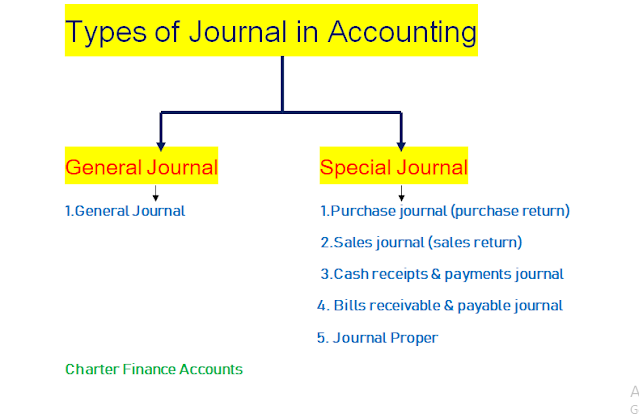Let us understand, as to, what are the 10 different types of Journal in Accounting? How they are relevant in our business while recording the different types of transactions such as sales and purchase of goods and services, cash receipts and cash payments etc.,. This has been explained in simple tactics with a simple diagram to make it easy to understand.
What is Journal in Accounting? Its meaning, definition, nature & scope:
It is the book of primary entry or original entry where the business transactions are recorded primarily in this book. The entry made in this book is called a journal entry. All the business transactions are first recorded in this book in chronological order or date wise. It is the book of original entry where the business transactions are recorded in a format of debit and credit.
Journalising: All the business transactions are recorded in this book in chronological order. The process of recording transactions in this daybook is called journalising. The transactions are recorded in this book as per the double-entry system of accounting which has dual aspect such as debit aspect and credit aspect.
What are the 10 different types of Journal in Accounting that everyone should know?
In the case of small organisations such as sole trading concerns, we generally maintain General Journal to record a few transactions. However, in case of big business concerns, we will divide this Journal into Special Journal to record a large number of transactions depending upon the nature, type of transaction. In case of big business concerns, these books are also called Subsidiary Books.
For example, to record credit purchase of goods we have a Purchase book. To record credit sale of goods, we use Sales book. Similarly, we have purchase return book and sales return book to record return inwards and return outwards. To record cash purchases and cash sales, we have a cash book. We have bills receivable & payable book to record transactions relating to bills received and issued. All other transactions such as opening entries, closing entries, adjustment entries, rectifying entries are recorded in Journal Proper.
1. General Journal
In case of small business concerns, they maintain General Journal, to record all the transactions in this book. Since the volume of transactions is pretty low, they can go with this daybook, to record all the transactions in this one book. This sort of daybook is suitable for small and medium-sized business concerns to record all the business transactions, post them to the ledger and prepare financial statements at the end of the year.
2. Purchase Journal
This daybook is maintained by big business concerns to record the credit purchase of goods & services. This daybook is used only to record the purchase of goods on credit from suppliers. We can find only credit purchase of goods recorded in this daybook. This is also called purchase daybook For example, purchased goods from David for $1000 on credit will be recorded in this purchase daybook.
3. Sales Journal
This daybook is maintained by big business concerns to record the credit sale of goods & services. This daybook is used only to record the sale of goods on credit to customers. We can find only credit sale of goods recorded in this daybook. This is also called sales daybook. For example, sold goods to John for $1000 on credit will be recorded in this sales daybook.
4. Purchase return book
This book records the purchase return of goods that are originally purchased on credit from suppliers. This daybook is also called return outwards book
5. Sales return book
This book records the sales return of goods that are originally sold to customers on credit. This daybook is also called return inwards book
6. Cash receipts Journal
All the transactions which involve cash receipts to the business firm will be recorded in this daybook. For example, receipt of cash from customers on account of goods sold, receipt of cash on account of machinery sold will be recorded in this Cash receipts daybook.
7. Cash payments Journal
All the transactions which involve cash payments made by the business firm will be recorded in this daybook. For example, cash paid to suppliers on account of purchases made, purchase of machinery for cash will be recorded in this Cash payment daybook.
8. Bills receivable Journal
This book records transactions relating to the bills receivable that are drawn in favour of the business firms. All the bills which are drawn in favour of the business firm will be recorded in this Bills receivable book
9. Bills payable Journal
This book records transactions relating to the bills that are payable by the business firm. All the bills which are payable by the business firm will be recorded in this Bills payable book
10. Journal proper
This book records the transactions that are not recorded in any of the above daybooks. For example, transactions relating to credit purchase of fixed assets and sale of assets on credit will be recorded in this daybook. Opening entries, closing entries, adjustment entries, rectifying entries are also recorded in this daybook
Conclusion
Here we have seen as to what are the 10 different types of Journal in Accounting? How they would be used in case of small and big business concerns, depending upon the volume of transactions or nature & type of transactions involved in the business. This would help us to understand its classification depending upon the need or requirement or the type of transactions involved in the different business organizations.


Post a Comment
if you have queries let me know and mail me at syednissaruddin99@gmail.com